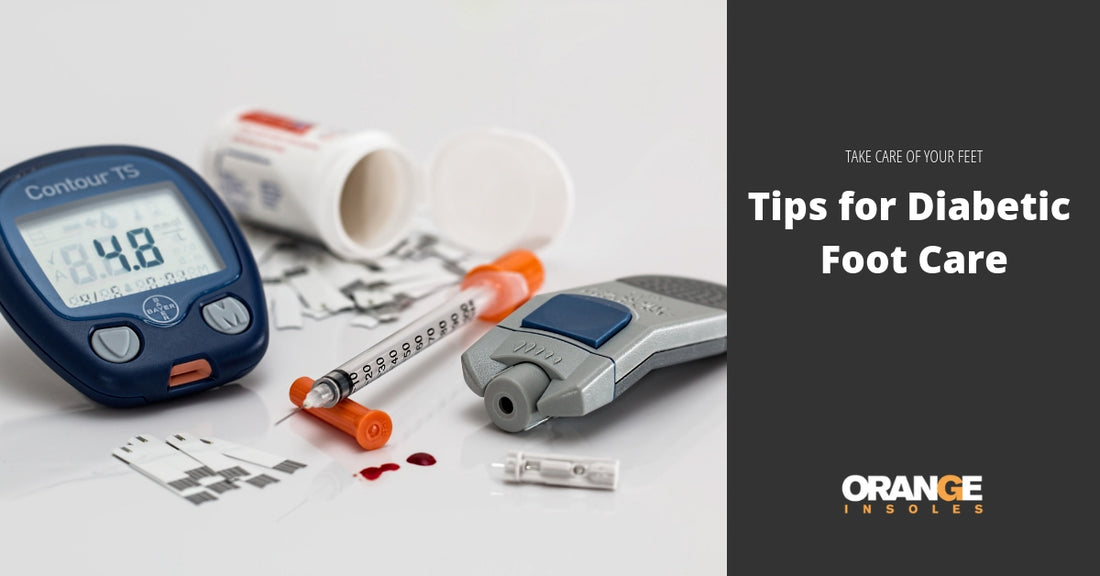Diabetes can affect your life in many different ways, but its impact on how you should buy and wear shoes is easily overlooked. Given that diabetic neuropathy can lead to the loss of sensation in the foot, potentially causing long-term damage, it’s important to take care of your feet.
If you have diabetes, the following tips should be helpful. If you know someone with diabetes, we encourage you to share these tips with them.
Tip #1. Buying New Shoes? Check For Seams With Your Finger
When choosing new shoes, it’s important to check that the type and positioning of stitching won’t cause discomfort and problems. Because diabetes can inhibit foot sensation, it’s best to do this by hand. Stick your finger inside the shoe and run it around all internal parts.
What you’re looking for are seams that could impress upon - or rub - the foot wrongly, causing blisters. Ideally, you wouldn’t feel any stitching or seams inside the shoe. This provides a good indication that seams won’t cause friction.
Tip #2. Wear Diabetic Socks
Wearing the wrong socks in seamless shoes can also be problematic. If you have diabetes, it’s important to wear diabetic socks, which:
- Are seamless: Seams can rub against the skin and may cause harmful blisters or ulcers.
- Are non-constricting: Tight socks can reduce circulation to your feet. Reduced blood flow to your feet can lead to further damage.
- Have extra padding: Extra padding can provide additional comfort and cushion for sensitive feet.
- Provide warmth: Diabetes can cause blood vessels to restrict, decreasing circulation. Warmer socks could help to improve circulation.
- Wick moisture: Keeping feet dry reduces the risk of skin infection.
- Are anti-microbial: Anti-microbial socks prevent bacterial or fungal growth in the areas of the foot most prone to moisture.
Generally, diatbetic socks are designed to anticipate and reduce different maladies caused by reduced circulation and nerve damage associated with diabetes. When combined with seamless shoes, they’re a good first step towards protecting your feet.
Tip #3. Get Measured Every Time you Buy Shoes
Everyone should get their feet measured every time they buy new shoes. For diabetics, this is especially important. When you have diabetes, shoes that are too tight can be dangerous.
When getting measured, it’s best to do it when the foot is swollen; possibly at the end of the day. This provides a better sense for how the shoe will fit in a worse-case scenario than the best-case one. After all, it’s better to have shoes that will be a little loose (but not too loose) from time to time rather than footwear that will cut the blood circulation.
Tip #4. Check your Feet Daily
Holistic foot health is also important for everyone. However, if you have diabetes, you want to be checking your feet daily for changes. Even if you’ve selected the right shoes and are wearing diabetic socks, your body may change. Shoes that used to fit may become too tight. Or, maybe your feet weren’t swollen the last time you bought shoes.
Either way, It’s better to recognize - and catch - problems before they occur.
Fortunately, many symptoms present themselves before they’re dire. When looking at your feet, look for redness, indentation, and bruising. If you see these symptoms, it may be a sign that your shoes are too tight or you need to replace your socks. Because diabetes inhibits sensation, you may not have felt the pressure throughout the day. Vigilance is a good way to catch problems early.
Tip #5. Make Sure You’ve Got Good Support
Your feet are your body’s foundation and, if misaligned, you may experience pain in other parts of your body...even if you don’t feel them in your feet. As part of your care regimen, be sure you’re checking that your body is properly aligned. If necessary, invest in a good pair of insoles to help keep your body aligned.

























































